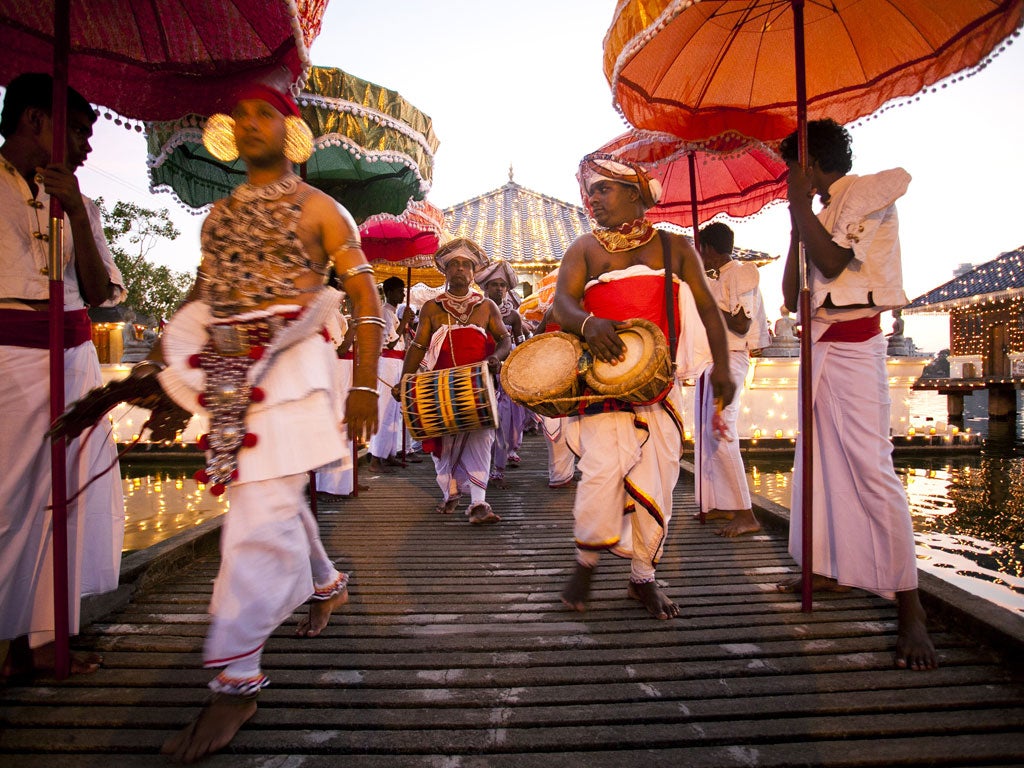Your support helps us to tell the story
From reproductive rights to climate change to Big Tech, The Independent is on the ground when the story is developing. Whether it's investigating the financials of Elon Musk's pro-Trump PAC or producing our latest documentary, 'The A Word', which shines a light on the American women fighting for reproductive rights, we know how important it is to parse out the facts from the messaging.
At such a critical moment in US history, we need reporters on the ground. Your donation allows us to keep sending journalists to speak to both sides of the story.
The Independent is trusted by Americans across the entire political spectrum. And unlike many other quality news outlets, we choose not to lock Americans out of our reporting and analysis with paywalls. We believe quality journalism should be available to everyone, paid for by those who can afford it.
Your support makes all the difference.Why go in 2013? Serenity returns to Serendib
Dubbed Serendib – the origin of the word serendipity – by seafaring Arab traders centuries ago, Sri Lanka has been anything but serene in recent decades. Battered, tragically, by the 2004 Boxing Day tsunami and wracked by a civil war from 1983 to 2009, many areas of South Asia's most compact country have remained off limits to even the most intrepid traveller. Now the bitter conflict with the Tamil Tiger rebels is at an end, investment is again fuelling the tourist industry and visitor numbers are steadily increasing. Prices are affordable. Indeed, Sri Lanka is emerging as one of the planet's best-value destinations.
North of the capital Colombo, on Sri Lanka's west coast, Kalpitiya and the Puttalam lagoon are eco-tourism hotspots with birdwatching and kayaking. Near Dondra Head, on the south coast, mighty blue whales are regular visitors from January to April while land-based wildlife thrills include the leopards and elephants of Yala National Park, and the more rugged and remote Wilpattu National Park, open once more after being closed for more than two decades during the civil war.
The gloriously arcing beaches of the nation's east coast are now challenging traditional southern favourites. Arugam Bay's sandy crescent is one of Asia's best surf spots and further north, Uppuveli and Nilaveli near Trincomalee stretch for several pristine kilometres. Fast-forward five years, and both beaches will definitely be accorded "where to go next" status in glossy travel magazines. Why wait that long?
Life-changing experiences
Explore the glorious labyrinth of Galle's 17th-century Dutch fort. In past centuries, the Unesco-listed colonial town was a prosperous hub of global trade and now boutique hotels and an emerging arts scene instil a cosmopolitan allure. Further north, you can discover Sri Lanka's imposing ancient cities, emerging from a verdant landscape. All around the country, tuck into great-value local cuisine including grilled seafood, spicy kottu (roti chopped and mixed with vegetables) and multi-course mini banquets of different curries at family run guesthouses. Indian and Thai cooking may be world-renowned, but Sri Lanka's time in the global gourmet spotlight can't be far away.

Join our commenting forum
Join thought-provoking conversations, follow other Independent readers and see their replies
Comments